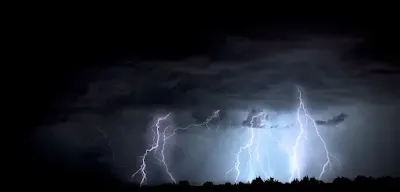Free energy so what do we mean by it ? It is a concept
in modern science that considers the generation of energy without any work.
Well, we all believe in this type of bullsh*t, until and unless we all get a
reality check and that reality check is science itself. Like if we believe that
some kind of magical technology is going to make free energy possible, then I
guess we all have either been mad right now or well it might be possible in
sometime very long, farther in the further, when the generation and generations
of our children would live. Well, lets us dive deeper in our today’s topic so
called – “Free Energy”.
Is free energy even possible ?
 |
| Credits to Quora |
This question is always been on the mind of every teenager
ever. Now, I have said that free energy is not at all possible and the reason
behind it is science itself. Well, yes let me explain, you know that every
freaking object in our universe follows
the law of science whether it had been the Newton’s laws or Laws of
Thermodynamics or any conservation law. They follow it. So, this concept of
free energy first of all creates energy from no work and no energy is spend
itself generating it meaningly it is denying the existence of the one of the major
laws of science – The Law of Mass-Energy Conservation. The law of mass-energy
conservation states that mass and energy cannot be destroyed nor be created.
Then how in this world can we generate, this so called free energy ?
Why Free Energy Is Not Possible ?
 |
| Credits to Quora |
Now, let’s explain all this with the help of an example. For example, in a medical PET scan, when a positron from the tracer liquid collides with an electron within the patient's body, their collision results in the complete conversion of mass into energy. This process generates two gamma particles (ray), characterized by their high energy, which disperse in opposite directions. The PET machine is designed to detect these gamma rays, utilizing them to precisely locate the positron-electron collision occurrence. In turn, this enables the identification of the specific area within the patient's body where the tracer liquid is accumulating. Well, worth noting that mass-to-energy conversion is a phenomenon observed not only in medical procedures like PET scans but also in nuclear bombs, nuclear reactors, and during the process of radioactive decay. However, the efficiency of this conversion varies, with only a fraction of the bomb's mass being effectively transformed into energy in the case of nuclear bombs and reactors.
On the contrary, particle accelerators like the Large Hadron Collider (LHC) showcase the conversion of energy into mass. These accelerators employ extensive arrays of magnets to propel particles, such as electrons and protons, to remarkable velocities, imparting a substantial amount of kinetic energy to them. Subsequently, these accelerated particles are directed to collide either with a stationary target or with particles accelerated in the opposite direction. When the collision occurs, the kinetic energy is dissipated as the particles come to a halt. However, as per the principle of energy conservation, the energy cannot simply vanish; it must manifest in another form. Consequently, the lost kinetic energy is transformed into mass, giving rise to numerous new particles during the collision. Detection of these newly created particles provides physicists with valuable insights into the potential types of particles that can exist.
The experimental verification of the conservation of mass-energy is a recurring theme in various scientific processes, such as the operation of particle accelerators, nuclear reactors, and the conduct of medical PET scans. Moreover, this principle extends to ordinary chemical reactions, where energy transformations contribute to changes in mass. The minuscule yet measurable mass difference before and after a chemical reaction serves as the source of energy released or absorbed. Every chemical experiment conducted serves as experiential validation for the conservation of mass-energy.
It is worth noting things like, across the multitude
of scientifically rigorous and repeatable experiments conducted to date, there
has been no observed violation of the conservation of mass-energy. Particle
accelerators, equipped with meticulous detectors, meticulously monitor the movement
of every element of mass and energy within the system. Despite the substantial
energy input into the particles during these experiments, no unaccounted-for
energy has ever been detected, reinforcing the robustness of the conservation
principle.
Apart from extensive experimental substantiation, the law of conservation of mass-energy is a theoretical necessity. If energy could spontaneously emerge from nothing, the vast expanse of our ancient universe would eventually witness such energy manifestations.
Without the constraining mechanism of conservation, the spontaneously generated energy could potentially be infinite in magnitude. As the universe's age increases, the likelihood of infinite energy emergence from nothing would approach 100%. The critical issue lies in the potential catastrophic consequences of infinite (or even sufficiently large non-infinite) energy, which would lead to the destruction of our universe. The continued existence of our universe serves as direct evidence that the law of conservation of mass-energy is not only fundamental but also universally applicable. If this law were localized to Earth and not applicable to distant regions like Alpha Centauri, the unregulated emergence of infinite energy on Alpha Centauri would jeopardize the entire universe. The universality of mass-energy conservation is absolute and unyielding. Individuals advocating for free energy machines must logically contend that the universe itself does not exist.
Shenanigans of free energy might argue that while mass-energy conservation is generally upheld, it could be violated in unconventional experiments. However, celestial bodies like the centres of stars and supernovae provide environments far more exotic than any experimental setup in a tinkerer's workshop. If mass-energy conservation were to be breached, it would be more readily and promptly observed in celestial bodies than in a tabletop contraption. Yet, such violations have never been documented. The allure of free energy appeals to those seeking something for nothing. The prospect of creating energy out of thin air, if feasible, could lead to unimaginable wealth without the need for any labour.
Well,
I guess I had gone too much out of topic, but what I meant is just to give examples
on law conservation of mass-energy. In conclusion, the concept of free energy,
which suggests the generation of energy without any associated work, is often
regarded with scepticism in the modern science or in short bullsh*t.
References: I would like to give credits to the following two site for enlightening all of us for the above information :

